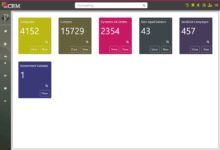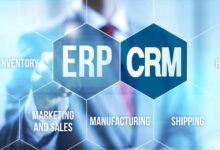Crm data migration services: 7 Powerful CRM Data Migration Services to Transform Your Business
Switching CRM platforms can feel like moving houses—exciting, but overwhelming. With the right CRM data migration services, you turn chaos into clarity, ensuring no customer detail gets lost in transition.
What Are CRM Data Migration Services?

CRM data migration services are specialized solutions designed to transfer customer data from one Customer Relationship Management (CRM) system to another without loss, corruption, or duplication. These services are essential for businesses upgrading their CRM software, consolidating platforms, or shifting from legacy systems to modern cloud-based solutions.
Defining CRM Data Migration
CRM data migration involves extracting data from a source CRM, transforming it into a compatible format, and loading it into a target system—commonly referred to as the ETL (Extract, Transform, Load) process. This isn’t just copying files; it’s a strategic overhaul ensuring data integrity, consistency, and usability post-migration.
- Data sources can include on-premise databases, spreadsheets, legacy CRMs, or cloud platforms.
- The process often includes cleansing, deduplication, and schema mapping.
- Successful migration preserves relationships between contacts, accounts, deals, and activities.
“Data is the new oil, but only if it’s refined and usable.” — Clive Humby, mathematician and data science pioneer
Why Businesses Need Professional CRM Migration
While some companies attempt DIY migration, the risks of data loss, downtime, and operational disruption are high. Professional CRM data migration services provide expertise, tools, and project management to ensure a smooth transition. They handle complex data structures, compliance requirements, and integration with other business systems like ERP or marketing automation tools.
- Experts anticipate edge cases and mitigate risks before they occur.
- They ensure compliance with data protection laws like GDPR or CCPA.
- Service providers often offer post-migration support and validation.
Top 7 CRM Data Migration Services in 2024
Choosing the right CRM data migration service can make or break your digital transformation. Below are seven of the most powerful and trusted providers in the market, each offering unique strengths for different business needs.
1. Astera Centerprise
Astera Centerprise is a robust data integration platform that supports end-to-end CRM data migration. It offers drag-and-drop functionality, pre-built connectors for popular CRMs like Salesforce, HubSpot, and Microsoft Dynamics, and advanced data transformation capabilities.
- Supports real-time and batch migration.
- Includes built-in data quality tools for cleansing and validation.
- Offers cloud and on-premise deployment options.
Its intuitive interface makes it ideal for non-technical users, while its scalability suits enterprise-level migrations. Learn more at Astera’s official website.
2. Talend Data Integration
Talend is a leader in open-source data integration and is widely used for complex CRM data migration services. It supports over 1,000 connectors and integrates seamlessly with cloud platforms like AWS, Azure, and Google Cloud.
- Provides real-time monitoring and error handling.
- Offers strong data governance and security features.
- Supports migration to and from Salesforce, Zoho, and SugarCRM.
Talend’s transparency and community support make it a favorite among IT teams. Visit Talend’s site for detailed documentation and trial options.
3. MuleSoft Anypoint Platform
MuleSoft, a Salesforce company, offers one of the most powerful integration platforms for CRM data migration services. It excels in connecting disparate systems through APIs, making it ideal for organizations with hybrid IT environments.
- Enables real-time data synchronization across systems.
- Supports complex data mapping and transformation.
- Integrates with over 300 SaaS and on-premise applications.
MuleSoft is particularly effective for enterprises undergoing digital transformation. Its API-led approach ensures future scalability. Explore its capabilities at MuleSoft’s official site.
4. Informatica Cloud
Informatica is a veteran in enterprise data management and offers a cloud-native solution for CRM data migration services. Its Intelligent Data Management Cloud (IDMC) uses AI to automate data discovery, quality, and governance.
- Automates data profiling and cleansing.
- Supports secure migration with encryption and role-based access.
- Integrates with Salesforce, Microsoft Dynamics, and SAP CRM.
Informatica is trusted by Fortune 500 companies for its reliability and compliance features. More details are available at Informatica’s website.
5. Dell Boomi
Dell Boomi is a cloud-native integration platform as a service (iPaaS) that simplifies CRM data migration services with its no-code interface. It’s known for rapid deployment and ease of use.
- Offers pre-built workflows for common CRM migrations.
- Provides real-time data sync and monitoring.
- Supports hybrid and multi-cloud environments.
Boomi’s AtomSphere platform is ideal for mid-sized businesses looking for agility. Check out Boomi’s site for customer success stories.
6. FME by Safe Software
FME (Feature Manipulation Engine) is a spatial data integration platform that also handles CRM data migration services, especially for organizations dealing with location-based data.
- Supports over 450 data formats, including GIS and CRM systems.
- Offers visual workflow design for complex transformations.
- Used by government agencies and logistics companies.
FME is powerful for niche use cases where CRM data intersects with geographic information. Learn more at Safe Software’s site.
7. Syncari
Syncari is a modern data synchronization platform built specifically for CRM data migration services. It stands out by offering bi-directional sync and automated data unification across multiple systems.
- Eliminates data silos between CRM, marketing, and finance platforms.
- Uses AI to resolve data conflicts automatically.
- Supports Salesforce, HubSpot, Netsuite, and Marketo.
Syncari is ideal for companies seeking a single source of truth. Visit Syncari’s website for a demo.
Key Benefits of Using CRM Data Migration Services
Investing in professional CRM data migration services offers tangible returns across operations, customer experience, and strategic decision-making. These benefits go beyond simply moving data—they transform how businesses leverage information.
Improved Data Accuracy and Integrity
One of the biggest challenges in CRM migration is data quality. Legacy systems often contain duplicates, outdated entries, and inconsistent formatting. CRM data migration services include data cleansing and normalization processes that ensure only accurate, relevant data is transferred.
- Reduces errors in customer communications and reporting.
- Enhances lead scoring and segmentation accuracy.
- Improves compliance with data privacy regulations.
“Garbage in, garbage out”—poor data quality undermines even the best CRM systems.
Minimized Downtime and Business Disruption
Downtime during CRM migration can halt sales, marketing, and customer service operations. Professional services use phased migration strategies, parallel testing, and rollback plans to minimize disruption.
- Allows teams to continue working during the transition.
- Enables testing in a sandbox environment before go-live.
- Provides 24/7 support during critical migration windows.
Enhanced Integration with Other Systems
Modern CRM systems don’t operate in isolation. CRM data migration services ensure seamless integration with ERP, email marketing, customer support, and analytics platforms.
- Enables automated workflows across departments.
- Supports real-time data sharing between systems.
- Reduces manual data entry and human error.
For example, integrating Salesforce with NetSuite via a migration service ensures financial and sales data are always in sync.
Common Challenges in CRM Data Migration
Despite the benefits, CRM data migration services must navigate several challenges. Understanding these pitfalls helps organizations prepare and choose the right provider.
Data Silos and Fragmented Sources
Many companies store customer data across multiple systems—Excel sheets, legacy CRMs, email archives, and departmental databases. This fragmentation makes migration complex.
- Requires comprehensive data discovery and mapping.
- Increases risk of missing critical data points.
- Necessitates cross-departmental coordination.
Professional CRM data migration services use data lineage tools to trace data origins and ensure completeness.
Data Mapping and Schema Differences
Different CRM systems use varying data models. For instance, Salesforce uses custom objects, while HubSpot relies on properties and pipelines. Mapping fields correctly is crucial.
- Requires deep understanding of both source and target systems.
- May involve creating new fields or merging existing ones.
- Needs validation to ensure data appears correctly post-migration.
Tools like Talend and Informatica offer visual mapping interfaces to simplify this process.
Data Security and Compliance Risks
Migrating sensitive customer data exposes organizations to security and compliance risks, especially under regulations like GDPR, HIPAA, or CCPA.
- Data must be encrypted during transfer and storage.
- Access should be role-based and auditable.
- Providers must comply with industry standards like SOC 2 or ISO 27001.
Top CRM data migration services include built-in compliance checks and audit trails.
How to Choose the Right CRM Data Migration Service
Selecting the best CRM data migration service depends on your business size, technical environment, budget, and long-term goals. Here’s a structured approach to making the right choice.
Assess Your Data Volume and Complexity
Start by evaluating the amount and complexity of your data. A small business with 10,000 contacts has different needs than an enterprise with millions of records and complex hierarchies.
- Consider the number of objects (contacts, accounts, opportunities) to migrate.
- Identify custom fields, workflows, and automation rules.
- Estimate data volume in GB or number of records.
High-volume migrations may require scalable platforms like Informatica or MuleSoft.
Check Integration Capabilities
Ensure the service supports integration with your current and target CRM, as well as other business systems.
- Verify pre-built connectors for your CRM platform.
- Ask about API support and custom integration options.
- Test compatibility with on-premise and cloud systems.
For example, if you’re moving from Zoho CRM to Microsoft Dynamics, confirm the provider has experience with both.
Evaluate Security and Support
Security and post-migration support are non-negotiable. Look for providers with strong data protection policies and responsive customer service.
- Ask about encryption, access controls, and compliance certifications.
- Check if they offer training and troubleshooting post-migration.
- Review SLAs (Service Level Agreements) for uptime and support response times.
Providers like Dell Boomi and Talend offer enterprise-grade security and 24/7 support.
Best Practices for Successful CRM Data Migration
Even with the best CRM data migration services, success depends on proper planning and execution. Follow these best practices to ensure a smooth transition.
Plan Early and Involve Stakeholders
Begin planning months before the migration. Involve key stakeholders from sales, marketing, IT, and customer service.
- Define migration goals and success metrics.
- Assign roles and responsibilities (e.g., data owner, project manager).
- Set a realistic timeline with milestones.
Early planning prevents last-minute surprises and ensures alignment across teams.
Clean and Audit Data Before Migration
Don’t migrate bad data. Conduct a thorough data audit and cleansing process before starting the migration.
- Remove duplicates, outdated records, and incomplete entries.
- Standardize formats (e.g., phone numbers, addresses).
- Validate email addresses and other contact details.
Tools like DemandTools or CRM-native deduplication features can help.
Test Thoroughly in a Sandbox Environment
Always test the migration in a non-production environment first.
- Perform a trial migration with a subset of data.
- Verify data accuracy, field mapping, and workflow functionality.
- Involve end-users in testing to catch usability issues.
Testing reduces the risk of errors affecting live operations.
The Future of CRM Data Migration Services
As businesses become more data-driven, CRM data migration services are evolving to meet new demands. Emerging technologies are shaping the future of how data is moved, managed, and utilized.
AI and Machine Learning Integration
AI is revolutionizing CRM data migration by automating data mapping, cleansing, and anomaly detection.
- AI can predict field mappings based on historical patterns.
- Machine learning models identify and flag suspicious or inconsistent data.
- Automated reconciliation ensures data consistency post-migration.
Platforms like Informatica IDMC and Syncari already use AI to enhance migration accuracy.
Real-Time Migration and Continuous Sync
Future CRM data migration services will shift from one-time projects to continuous data synchronization.
- Enables live data updates between systems.
- Supports hybrid cloud and multi-CRM environments.
- Reduces the need for periodic large-scale migrations.
Tools like MuleSoft and Boomi are leading this shift with real-time integration capabilities.
Increased Focus on Data Governance
As data privacy laws tighten, CRM data migration services will emphasize governance and compliance.
- Automated audit trails and consent management.
- Role-based access and data lineage tracking.
- Integration with enterprise data catalogs.
This ensures organizations remain compliant while maximizing data value.
What are CRM data migration services?
CRM data migration services are professional solutions that help businesses transfer customer data from one CRM system to another safely, accurately, and efficiently. They include data extraction, cleansing, transformation, and loading into a new platform.
How long does CRM data migration take?
The duration varies based on data volume and complexity. Small migrations may take a few days, while enterprise-level projects can take several weeks. Proper planning and testing are crucial for timely completion.
Is it safe to migrate CRM data?
Yes, when done with professional CRM data migration services. These providers use encryption, secure protocols, and compliance frameworks to protect data during transfer. Always choose a provider with strong security certifications.
Can I migrate data from Excel to a CRM?
Absolutely. Most CRM data migration services support importing data from spreadsheets, databases, and legacy systems. The data will be cleaned and mapped to fit the new CRM’s structure.
Do I need technical skills for CRM migration?
Not necessarily. Reputable CRM data migration services handle the technical aspects. However, having an internal point of contact who understands your data structure is helpful for mapping and validation.
CRM data migration services are no longer a luxury—they’re a necessity for businesses aiming to stay competitive. From ensuring data accuracy to enabling seamless integration, the right service transforms migration from a risky project into a strategic advantage. Whether you’re a small business upgrading to HubSpot or an enterprise moving to Salesforce, investing in expert migration support pays off in efficiency, compliance, and customer satisfaction. As AI and real-time sync reshape the landscape, the future of CRM migration is smarter, faster, and more secure than ever.
Further Reading:


